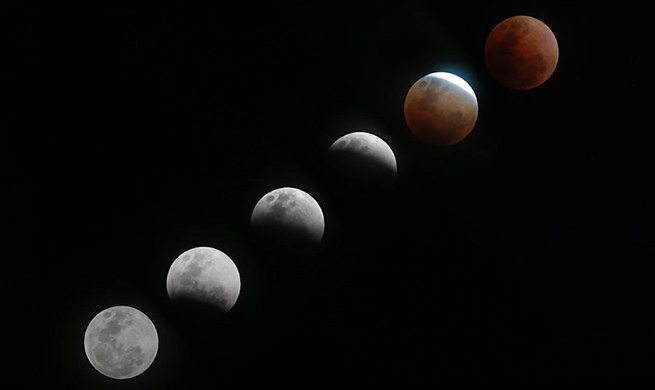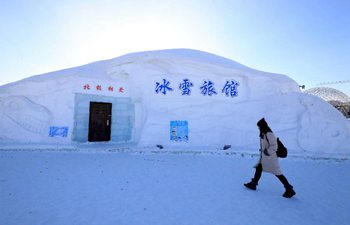LOS ANGELES, Jan. 31 (Xinhua) -- The existence of large numbers of molecules in winds powered by supermassive black holes at the centers of galaxies has puzzled astronomers more than a decade. New theory predicts that molecules in black hole winds are not survivors of the heat of the energetic outflows at all, but brand-new molecules.
Molecules trace the coldest parts of space, and black holes are the most energetic phenomena in the universe, so finding molecules in black hole winds was like discovering ice in a furnace.
Researchers in Northwestern University's Center for Interdisciplinary Research and Exploration in Astrophysics (CIERA) predict that these molecules are born in the winds with unique properties that enable them to adapt to and thrive in the hostile environment.
The theory, published in the current issue of Monthly Notices of the Royal Astronomical Society, is the work of Lindheimer post-doctoral fellow Alexander Richings, who developed the computer code that, for the first time, modeled the detailed chemical processes that occur in interstellar gas accelerated by radiation emitted during the growth of supermassive black holes.
"When a black hole wind sweeps up gas from its host galaxy, the gas is heated to high temperatures, which destroy any existing molecules," Richings was quoted as saying in a statement. "By modeling the molecular chemistry in computer simulations of black hole winds, we found that this swept-up gas can subsequently cool and form new molecules."
This theory answers questions raised by previous observations made with several cutting-edge astronomical observatories including the Herschel Space Observatory and the Atacama Large Millimeter Array, a powerful radio telescope located in Chile.
New stars form from molecular gas, so the new theory of molecule formation helps explain the formation of new stars in winds, according to the new study.
"This is the first time that the molecule formation process has been simulated in full detail, and in our view, it is a very compelling explanation for the observation that molecules are ubiquitous in supermassive black hole winds, which has been one of the major outstanding problems in the field," said co-author Claude-Andre Faucher-Giguere, who studies galaxy formation and evolution as an assistant professor in Northwestern's Weinberg College of Arts and Sciences.
Compared to pre-existing molecules, researchers believe that the new molecules formed in the winds are warmer and brighter in infrared radiation.
The new theory will be put to the test when the U.S. National Aeronautics and Space Administration (NASA) launches the James Webb Space Telescope in spring 2019. If the theory is correct, the telescope will be able to map black hole outflows in detail using infrared radiation, researchers say.
















